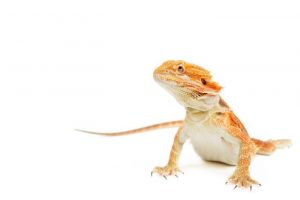A friend recently approached me – her colleague just took a new job and will be moving out of the country. The colleague wanted to know if I would be interested in helping them with re-homing their red bearded dragon. Unfortunately, they would not be able to bring their pet with them and they were searching for a good home for the lizard. I jumped at the  opportunity. I was glad to help out, and excited for a new experience to learn more about these wonderful and unique creatures. As Wagbrag always recommends – you need to research thoroughly before committing your self to getting a new pet. Here are few interesting facts about bearded dragons:
opportunity. I was glad to help out, and excited for a new experience to learn more about these wonderful and unique creatures. As Wagbrag always recommends – you need to research thoroughly before committing your self to getting a new pet. Here are few interesting facts about bearded dragons:
Origin
Bearded dragons have a docile personality, which helped them became a popular pet in the US in the 90’s. Ironically, these animals are native to Australia – where it’s been illegal to sell exotic pets since the the 60’s. So it’s believed that these creatures were originally smuggled in to the US. All pet bearded dragons as of today are now bred in the US.
Odd behavior
They are known to wave their arms. A very cute behavior, and some think their bearded dragon is actually waving “hello”. Most experts suspect that arm waving is their way of communicating their submission.
Life span
As pets, bearded dragons typically live up to 10-12 years of age if well cared for. In the wild, they typically live a few years less.
Diet
They are omnivores – they eat insects, vegetables and fruit.
Brumation
Brumation is similar to hibernation, and bearded dragons may or may not exhibit this type of behavior. Usually when the days get shorter, nights get longer and the temperature drops is when a bearded dragon would go into brumation in the wild. However, with the use of heating lamps, the environment for a pet bearded dragon is fairly consistent so they may not experience the need for brumation.
Venomous?
Actually yes – researchers at Australia’s Melbourne University discovered that they produce a very mild venom BUT it’s harmless to humans. Bites from bearded dragons are uncommon as long as they are handled properly.
Regeneration
Most lizards are known for regenerating body parts in case a tail or leg was lost. Bearded dragons can not regrow body parts.
Photo: Courtesy of ThinkStock









